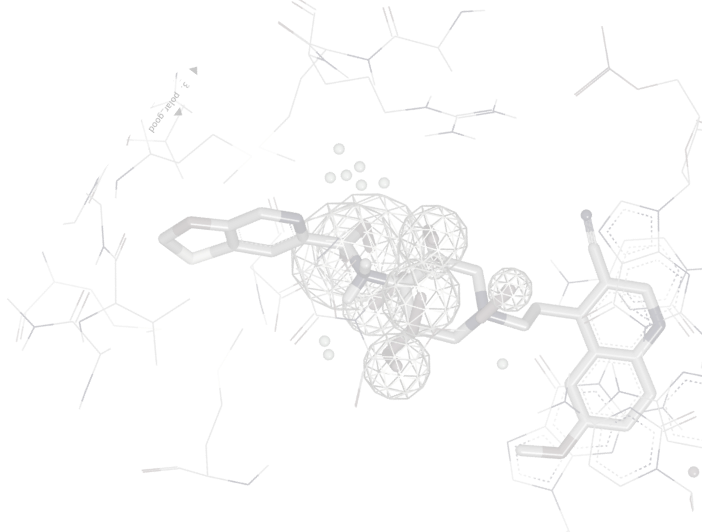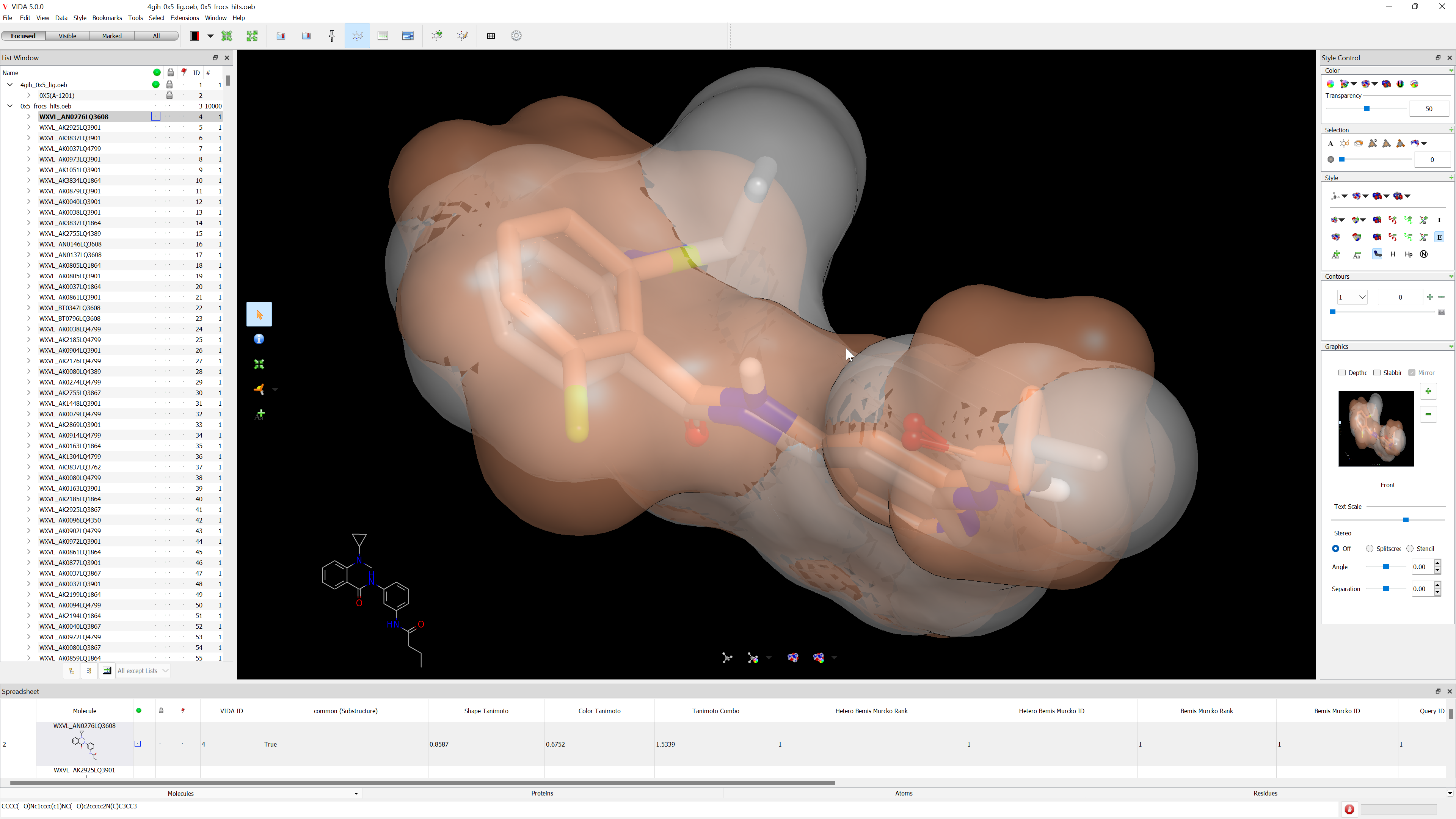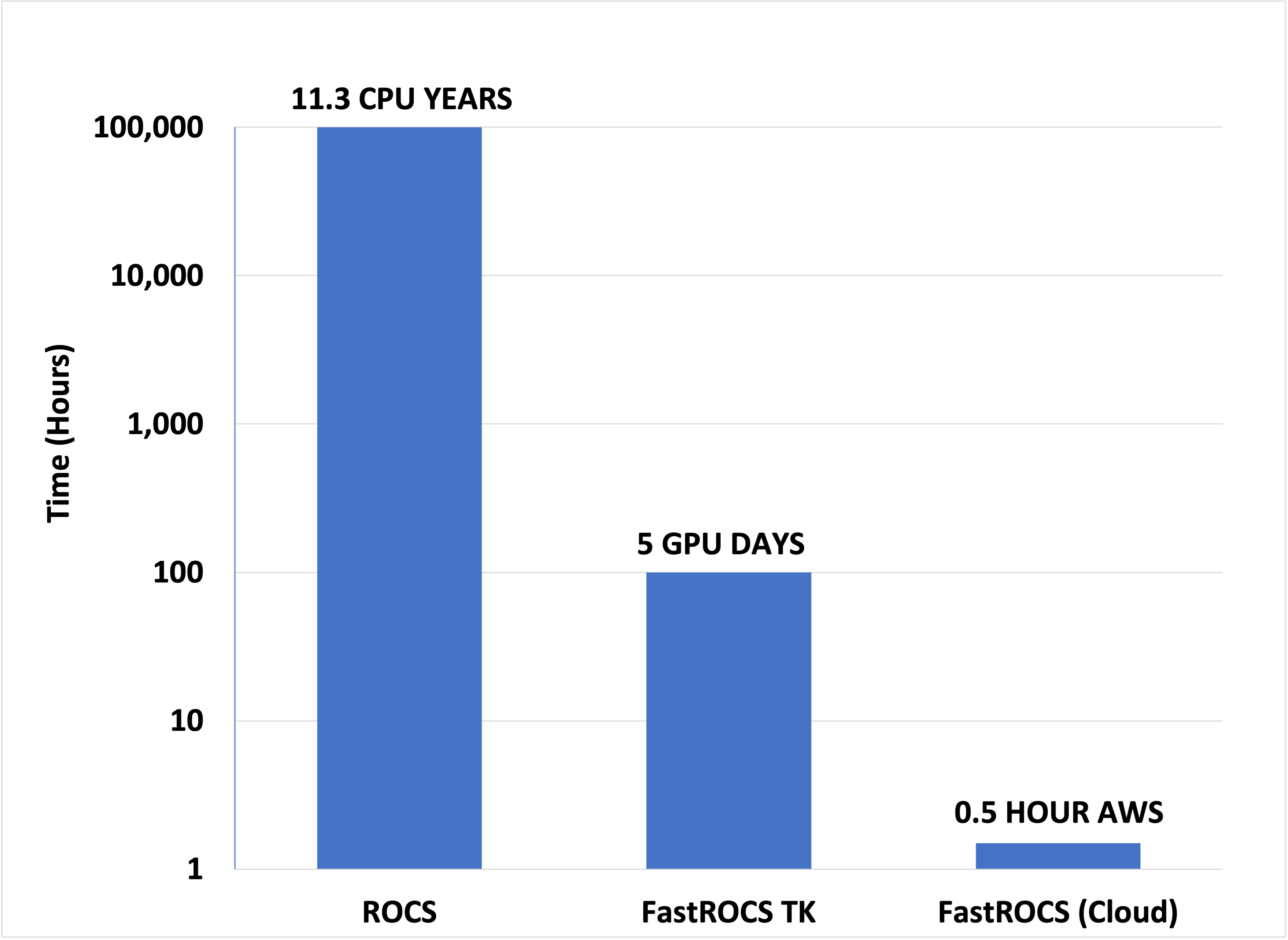
FastROCS
Extremely Fast Shape Similarity Search
Get near-instantaneous results for your virtual screening and lead hopping needs.
FastROCSTM conducts shape searches at speeds similar to those of approximate 2D methods, like fingerprints. This exceptional speed enables you to perform highly accurate 3D shape similarity calculations on millions of molecules within seconds, offering a significant advantage over traditional 2D approaches.
See FastROCS in action at AstraZeneca: Watch Jonas Boström presentation on ultra-fast virtual screening at the AstraZeneca IMED Science Retreat 2017
Our prospective study describes how conceptually simple shape-matching approaches can identify potent and selective compounds by searching ultralarge virtual libraries, demonstrating the applicability of such workflows and their importance in early drug discovery. -- Petrovic et al. (JCIM, 2022)

Features
- Get near-instantaneous results. Processes millions of conformations per second
- Returns overlays based on the quality of the 3D shape match against the query
- Launch jobs and view subsequent results using VIDA desktop visualizer or Orion web interface
- Overlay results are intuitive and visually informative
- Reports rigorous Tanimoto or Tversky measure between shapes
- Seamlessly combine ligand- and structure-based approaches in one step for you

FAQs
How can I access FastROCS?
FastROCS is available both in toolkit form (FastROCS TK) and OpenEye's web based interface (Orion Modeling Platform).
What is the difference between ROCS and FastROCS?
ROCS® is a comprehensive tool for fast shape-based scoring, able to process hundreds of molecules per CPU second.
FastROCS combines state-of-the-art science for shape similarity from ROCS with the latest GPU technology. With FastROCS, you can search virtual libraries of billions of compounds or cluster millions of molecules by shape. Using FastROCS, 3D shape similarity is now as fast as 2D methods.
What additional benefits with FastROCS Plus?
FastROCS Plus extends ability of FastROCS to run on multiple queries with the option to rescore hits using exhaustive shape, docking, or both. FastROCS Plus seamlessly combines ligand- and structure-based approaches in one step for you.
FastROCS and FastROCS Plus - trusted science, extreme speed, and unlimited scale! Find your next drug candidate, faster.
Seamlessly combine 3D ligand- and structure-based screening

FastROCS™ Plus offers a comprehensive, turnkey solution that integrates 3D ligand- and structure-based screening into a streamlined, automated workflow
Fastrocs Plus provides scientists with a high-performance GPU-accelerated shape-based screening tool designed for rapid, large-scale molecular comparison. Built on the proven ROCS (Rapid Overlay of Chemical Structures) technology, Fastrocs Plus leverages parallel GPU processing to deliver ultra-fast shape and color similarity calculations across millions of compounds in seconds. Ideal for virtual screening campaigns and early-stage drug discovery, it enables researchers to explore chemical space more efficiently, prioritize candidates faster, and make data-driven decisions with confidence. Combining speed, scalability, and precision, Fastrocs Plus delivers better hits; because better hits start with better screening.
Learn More
OpenEye’s shape searching technology helps you use maximize 3D ligand information to speed up your drug-design process.
WATCH OpenEye’s scientist, Mark McGann, Ph.D., describes the methods behind FastROCS and FastROCS Plus.
References
- A fast method of molecular shape comparison: A simple application of a Gaussian description of molecular shape Grant, J.A., Gallardo, M.A., Pickup, B., J. Comp. Chem., 1996, 17, 1653.
- A shape-based 3-D scaffold hopping method and its application to a bacterial protein-protein interaction Rush, T.S., Grant, J.A., Mosyak, L., Nicholls, A., J. Med. Chem., 2005, 48, 1489.
- Comparison of Shape-Matching and Docking as Virtual Screening Tools Hawkins, P.C.D., Skillman, A.G., Nicholls, A., J. Med. Chem., 2007, 50, 74.
- Assessment of Scaffold Hopping Efficiency by Use of Molecular Interaction Fingerprints Venhorst, J., Nunez, S., Terpstra, J.W., Kruse, C.G., J. Med. Chem., 2008, 51, 3222.
- Multiple protein structures and multiple ligands: effects on the apparent goodness of virtual screening results Sheridan, R.P., McGaughey, G.B., Cornell, W.D., J. Comput. Aided Mol. Des., 2008, 22, 257.
- Lessons in Molecular Recognition. 2. Assessing and Improving Cross-Docking Accuracy Sutherland, J.J., Nandigam, R.K., Erickson, J.A., Vieth, M. J. Chem., Inf. Model, 2007, 49, 1715.
miniWebinar: Opening up the druggable universe one cryptic pocket at a time
miniCUP Cambridge 2025
Expanding Orion’s Capabilities with AI
miniWebinar: Faster, Larger, Smarter: Filling the Funnel for Ultra-Large Scale Virtual Screening
Resources
Glimpse the Future through News, Events, Webinars and more
Event
miniCUP Basel 2025
Webinar
miniWebinar: Opening up the druggable universe one cryptic pocket at a time



